An important exhibition on theart of the fourteenth century in Rimini is scheduled from September 18 to November 7, 2021 at Palazzo Buonadrata in Rimini: it is L’oro di Giovanni. The Restoration of the Mercatello Cross and the Fourteenth Century in Rimini, curated by Daniele Benati and Alessandro Giovanardi, and promoted by the Fondazione Cassa di Risparmio di Rimini, the Istituto Superiore di Scienze Religiose A. Marvelli and by Soroptimist Rimini. The exhibition, with free admission, revolves around the ancient cross from the church of San Francesco in Mercatello, the only work dated and signed by the progenitor of the 14th-century Rimini School, namely Giovanni da Rimini (documented from 1292 to 1309/14), which has just returned from restoration in recent months and will be back in Rimini after 86 years. It is Giovanni’s most intact and largest crucifixion on panel, the only one signed and dated. It was made for Brother Tobaldo, a Franciscan father who had it executed for the Order’s convent church at Mercatello. It came to Rimini in 1935 for an exhibition curated by Cesare Brandi and has never been exhibited in the city since.
Alongside Giovanni da Rimini’s masterpiece, five other works will complete the exhibition. Also by Giovanni da Rimini, the “Diotallevi” Crucifix from about 1305, kept at the Museum of the City of Rimini, will be on display: the work comes from a donation by Adauto Diotallevi and has undergone an unfortunate color wash, but it remains most precious in its decoration and moving in its reading of the Passion of Christ. It still bears inscriptions in Greek, a sign of a relationship never dissolved with the oriental elegance of the Byzantine world. According to Daniele Benati it may have come from the Chapel with the Stories of the Virgin of St. John the Evangelist in Rimini (known as St. Augustine’s), also frescoed, before 1308, by Giovanni. We continue with two other works by the same artist: the Crucifixion from the church of San Lorenzo in Talamello (but coming from the Augustinian church of Poggiolo), which is the most modern and Giottesque of Giovanni’s works, capable, in its exhibited humanity, of anticipating what the later Italian tradition would know how to say with Masaccio and Piero della Francesca (it has not been exhibited in Rimini since 1995 and will be the subject of a small restoration financed by the Fondazione Cassa di Risparmio di Rimini), and the Crucifixion lent by the antiquarian Moretti. The latter panel, mutilated of the mourners on the sides and the blessing Christ on the cymatium, is to be counted among the oldest produced by the Rimini master because of its Greek inscriptions. It was also exhibited in 1935 in Rimini and has not been seen in the city since.
Then there is a work by Giuliano da Rimini (documented from 1307 to 1324): a Head of Christ Crucified from about 1320, from the Fondazione Cassa di Risparmio, on deposit at the Municipal Museums. It is a moving fragment of a lost cross, executed by Iulianus, that is, Giuliano, brother of Giovanni da Rimini. Compared to Giovanni, Giuliano expresses in a more pathetic and narrative key the experience of pain in the face of the crucified Son of God. The exhibition concludes with the “Spina” Crucifix by the Master of Montefiore (documented in the third quarter of the 14th century), a work from the Fondazione Cassa di Risparmio, on deposit at the Municipal Museums. Its place of origin is unknown, but it belonged to the Conti Spina Collection and is an example of the late production of the so-called fourteenth-century Rimini School, which, if it loses depth and vitality in its depiction of the human figure, does not lose finesse.
“Turning the spotlight back on the season of the fourteenth century Riminese School and on Giovanni, the greatest exponent of that extraordinary school of painting derived from Giotto,” says Mauro Ioli, President of the Fondazione Cassa di Risparmio di Rimini, “means bringing to attention once again one of the most significant strands of history, not only of Rimini but of the whole of Italian art. With this initiative we want to accompany this phase of gradual recovery with a proposal of beauty and reflection that we hope will be useful and welcome. I would like to personally thank, among others, Crédit Agricole Italia and the Association of Banking Foundations of Emilia-Romagna, who believed in this project and wanted to strongly support it.”
“The possibility of seeing all the great painted crosses by Giovanni da Rimini reunited,” says curator Daniele Benati, “constitutes a unique opportunity to approach one of the most extraordinary moments of Italian art. The last time this happened was in 1995 with the exhibition Il Trecento riminese. Masters and workshops between Romagna and Marche, at which, however, the Mercatello sul Metauro cross, the only one containing its signature and date (1309 or 1314), could not be present. After restoration work, aimed above all at warding off the damage produced by woodworm that was undermining the integrity of the wooden support, it is now possible to admire this masterpiece alongside the other crosses that studies have referred to Giovanni himself, the initiator of the fourteenth-century Rimini school. The current exhibition thus complements one held in 2018 at the National Gallery in London, which focused on the artist’s small devotional paintings. In his painted crosses, one can in fact grasp much better the updating that Giovanni, trained in a culture of late Byzantine matrix, conducted with respect to Giotto, who was present in Rimini in the last years of the 1200s. At the same time, the exhibition helps to understand the importance that in the Gothic age monumental crosses held in the decoration of sacred space and in the liturgy.”
“The exhibition,” says curator Alessandro Giovanardi, “aims to disclose an unprecedented and close look at the work of a master, stretched between the narrative and ’humanistic’ innovations of Giotto, present in Rimini since the end of the 13th century, and the formal and symbolic finesse of the coeval Byzantine culture, of the age of the Paleologians, in its historical, critical and iconological meaning. John, although with fewer recognized works, must be considered a master of no lesser quality than Giotto. Graphic and video supports will allow an accurate view of his artistic language on the poetic and sacred theme of the crucifixion, through different periods of his activity, noting its formal evolution and the solutions adopted to express the most repressed symbolic and theological meanings.”
 |
| Giovanni da Rimini, Diotallevi Crucifixion (c. 1305; tempera and gold on panel, 185 x 179 cm, Rimini, City Museum) |
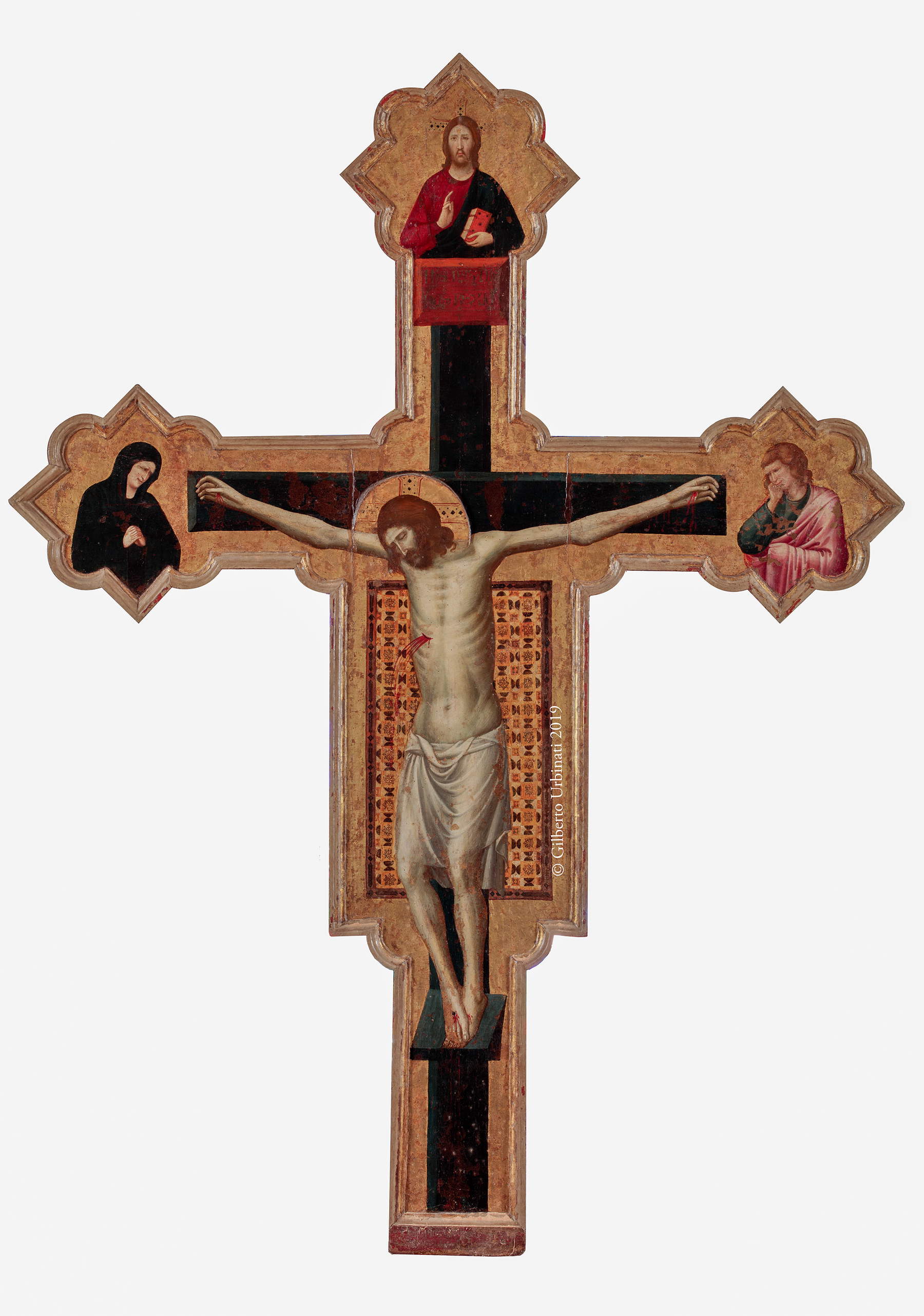 |
| Giovanni da Rimini, Crucifixion (1309 or 1314; tempera and gold on panel, 300 x 227 cm, Mercatello sul Metauro, Church of San Francesco) |
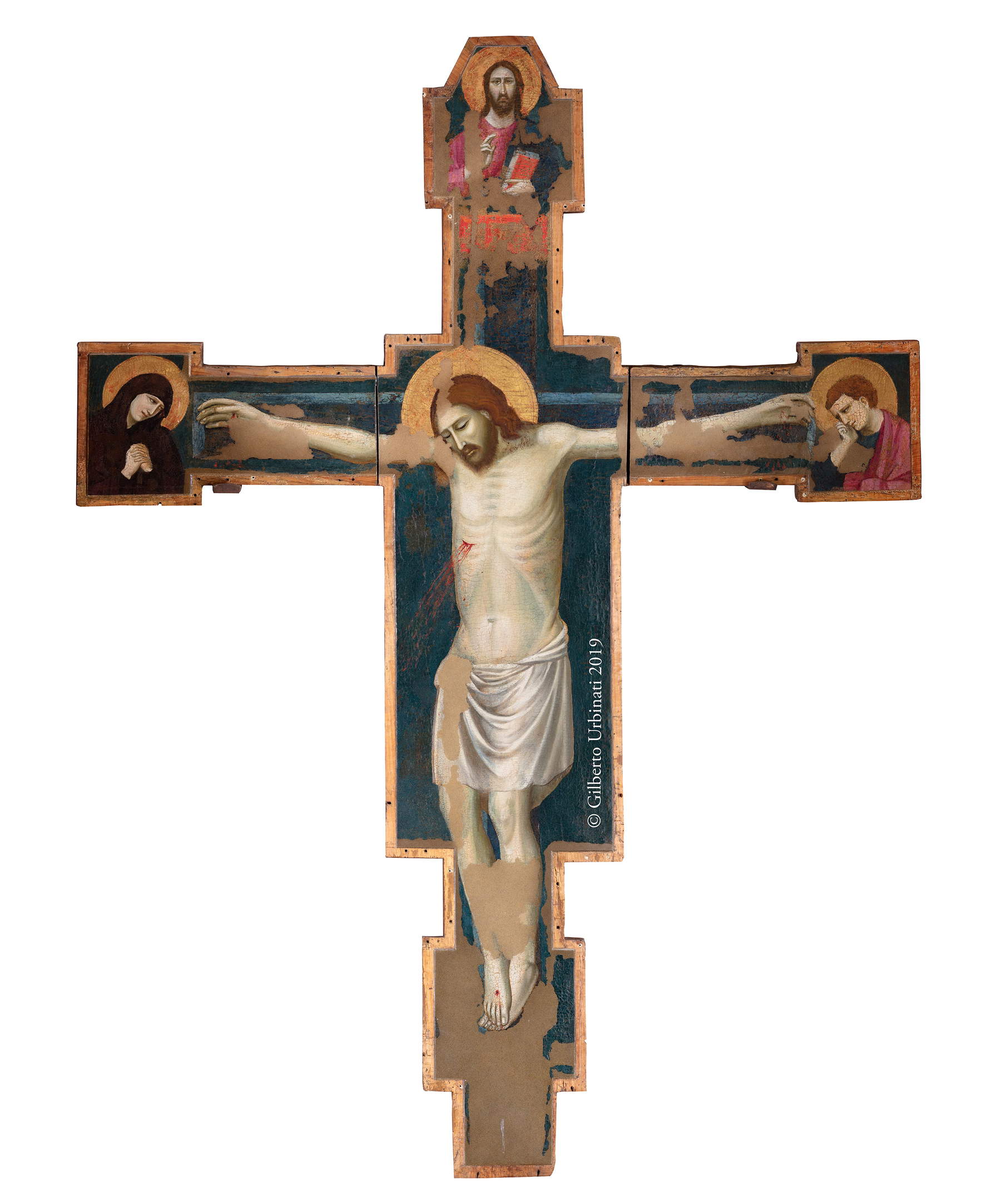 |
| Giovanni da Rimini, Crucifixion (post 1309; tempera and gold on panel, 230 x 160 cm; Talamello, Church of San Lorenzo - Diocese of the Republic of San Marino and Montefeltro) |
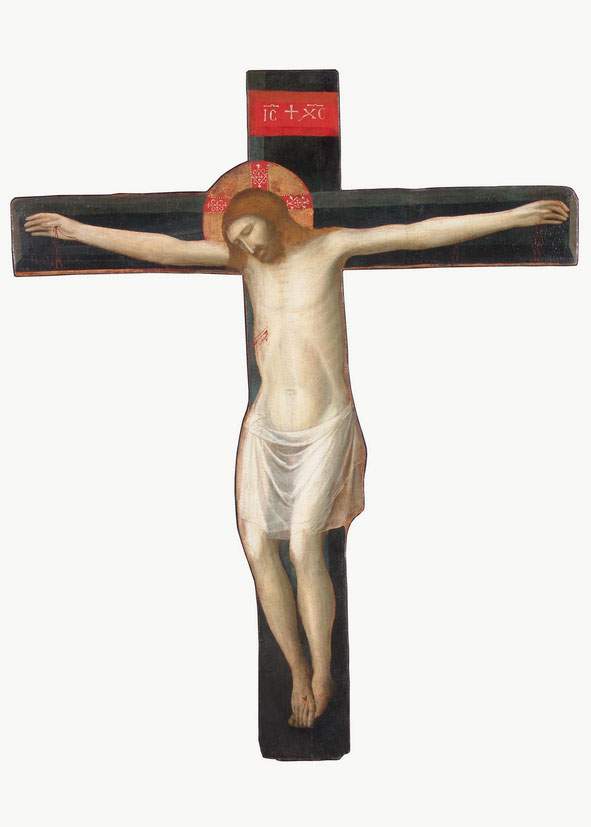 |
| Giovanni da Rimini, Crucifixion (1309-14; tempera on panel, 160.5 x 130 cm; London, Moretti Gallery) |
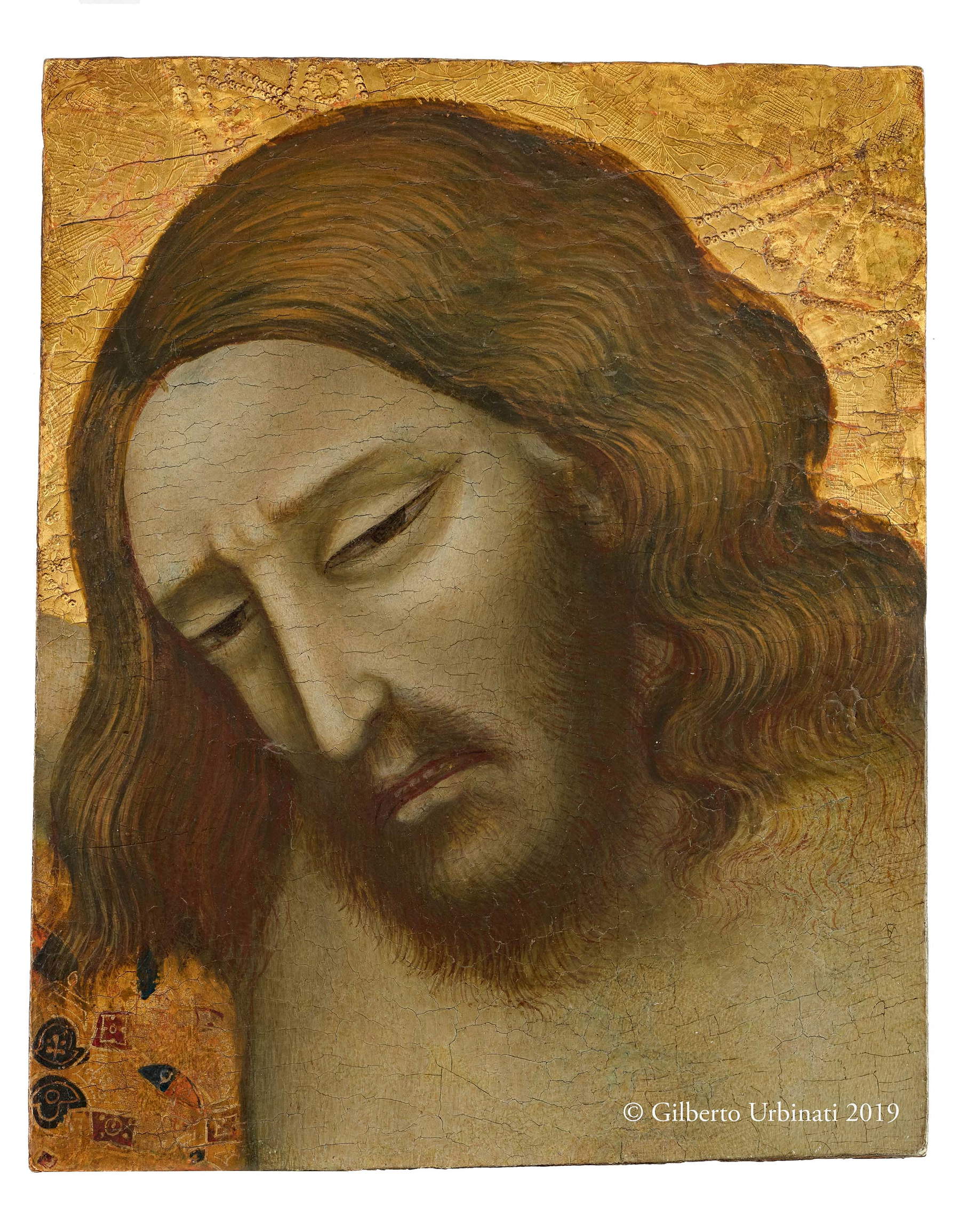 |
| Giuliano da Rimini, Head of Christ Crucified (c. 1320; tempera and gold on panel, 30 x 20 cm; Rimini, Fondazione Cassa di Risparmio, on deposit at Municipal Museums) |
 |
| Maestro di Montefiore, Crucifix Spina (1350-1370; tempera and gold on panel, 179 x 139 cm; Rimini, Fondazione Cassa di Risparmio, on deposit at Municipal Museums) |
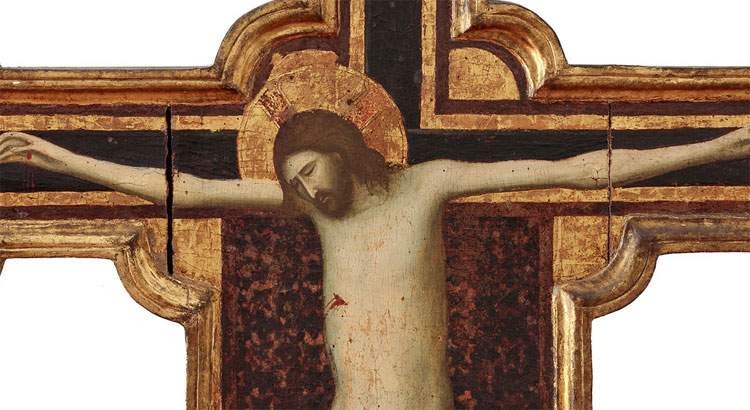 |
| A nucleus of important 14th-century Rimini crucifixes on display in Rimini |
Warning: the translation into English of the original Italian article was created using automatic tools. We undertake to review all articles, but we do not guarantee the total absence of inaccuracies in the translation due to the program. You can find the original by clicking on the ITA button. If you find any mistake,please contact us.